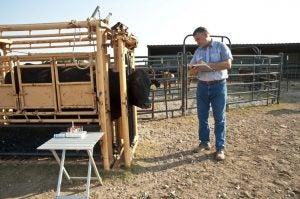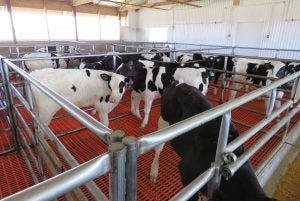There will always be misconceptions surrounding animal agriculture’s role in diseases. For instance, some people claim that many major pandemics have originated from farm animals.
These misconceptions can wreak havoc on animal ag, which is the goal from many extremist groups who twist the truth and spread this misinformation. They zero in on things like the spread of highly pathogenic avian influenza in poultry flocks over the past few years. The activist groups claim that this was a public health concern, but there’s a lot more to this story. (There is almost a zero risk to the human population from this pathogen.)
Most public health concerns and misconceptions stem from zoonotic diseases, which is any disease or infection that can naturally pass from animal to human. However, what those who spread these misconceptions often leave out are the many proactive and preemptive measures put in place by the animal ag industry to limit the exposure and spread of disease — to both animals and humans.
You can rest assured that animal ag is working every day to protect your health.

Today’s farmers and ranchers are using science and technology more than ever before to prevent the transmission of zoonotic diseases. One way this is accomplished is through biosecurity measures. Biosecurity is how we prevent diseases from being transferred to people, animals, and properties. The goal of biosecurity is to keep diseases off farms and/or prevent them from spreading further.
The U.S. Department of Agriculture’s National Institute of Food and Agriculture runs agricultural biosecurity programs. Through these programs, NIFA helps to detect animal diseases, performs research to guide legislation, and provides support to farmers.
NIFA helps to advance our understanding of biosecurity on a large scale, but many individual farms also have biosecurity measures in place. This can include washing down each vehicle that enters a farm’s property, only allowing in authorized visitors, and even ensuring that each person entering a facility showers before and after visiting a bio-secure location.
Other common biosecurity measures include having clean facilities, following a veterinarian-approved vaccination program, providing fresh food and water to animals, and having separate housing for sick or susceptible animals away from the general population. When new animals enter the facility (or return after events like a county fair), they are often quarantined for two weeks to watch for any signs of disease or illness. Sick animals can be reported to a farmer’s local veterinarian, extension office, or even state and federal veterinarians (depending on the symptoms), who can provide support and guidance.
By following these simple biosecurity measures, farmers can keep people and animals from getting sick. They also promote animal welfare and ensure a safe food supply.

The USDA’s Animal and Plant Health Inspection Service (APHIS) provides resources, research, and help with animal diseases. APHIS is currently working to prevent and control the spread of highly pathogenic avian influenza, which can infect wild and domesticated birds. APHIS has also enacted plans to eradicate various diseases, such as bovine tuberculosis, brucellosis, and scrapie. They are also working to prevent diseases like African swine fever from entering the United States, which would create huge impacts on the entire food system. APHIS is working to prevent disease in all areas of animal ag, including aquaculture, horses, avians, and wildlife, alongside other livestock.
The Centers for Disease Control and Prevention offers a One Health program. This program is working to achieve “optimal health outcomes recognizing the interconnection between people, animals, plants, and their shared environment” on a global scale.
One Health runs many programs, but some of their key goals are to prevent antibiotic resistance, prevent and control zoonotic diseases, prevent animal diseases, improve mental well-being through the human-animal bond, and prevent water contamination that could be the cause of illness for people and animals. The CDC and USDA also partner with 4-H and FFA to educate youth involved in agriculture about zoonotic diseases and how to prevent their spread.
One final way that agriculture is protecting your health is through the prevention of antibiotic resistance. All meat, milk, poultry, and eggs you find in the store is free of harmful antibiotic residues thanks to animal health and food safety protocols. Any that test positive for antibiotics are discarded.
The use of antibiotics in food animals is declining in both the United States and globally. This is because of improved management practices, biosecurity measures, vaccines, genetics, and more. Studies have also shown that the most urgent antibiotic resistance threats are not related to animal agriculture. There is a one in a billion chance of antibiotic treatment failure due to resistance from common antibiotics used in animal agriculture.
Today, the animal agriculture community is placing a large emphasis on protecting both animal and human health. By using measures like biosecurity, following expert guidance on animal diseases, and responsible antibiotic use, today’s farmers are able to keep people and animals healthy all while promoting animal welfare and ensuring a safe food supply!
Michelle Miller, the “Farm Babe,” is an internationally recognized keynote speaker, writer, and social media influencer and travels full time to advocate for agriculture. She comes from an Iowa-based row crop and livestock farming background and now resides on a timber farm in North Central Florida.



